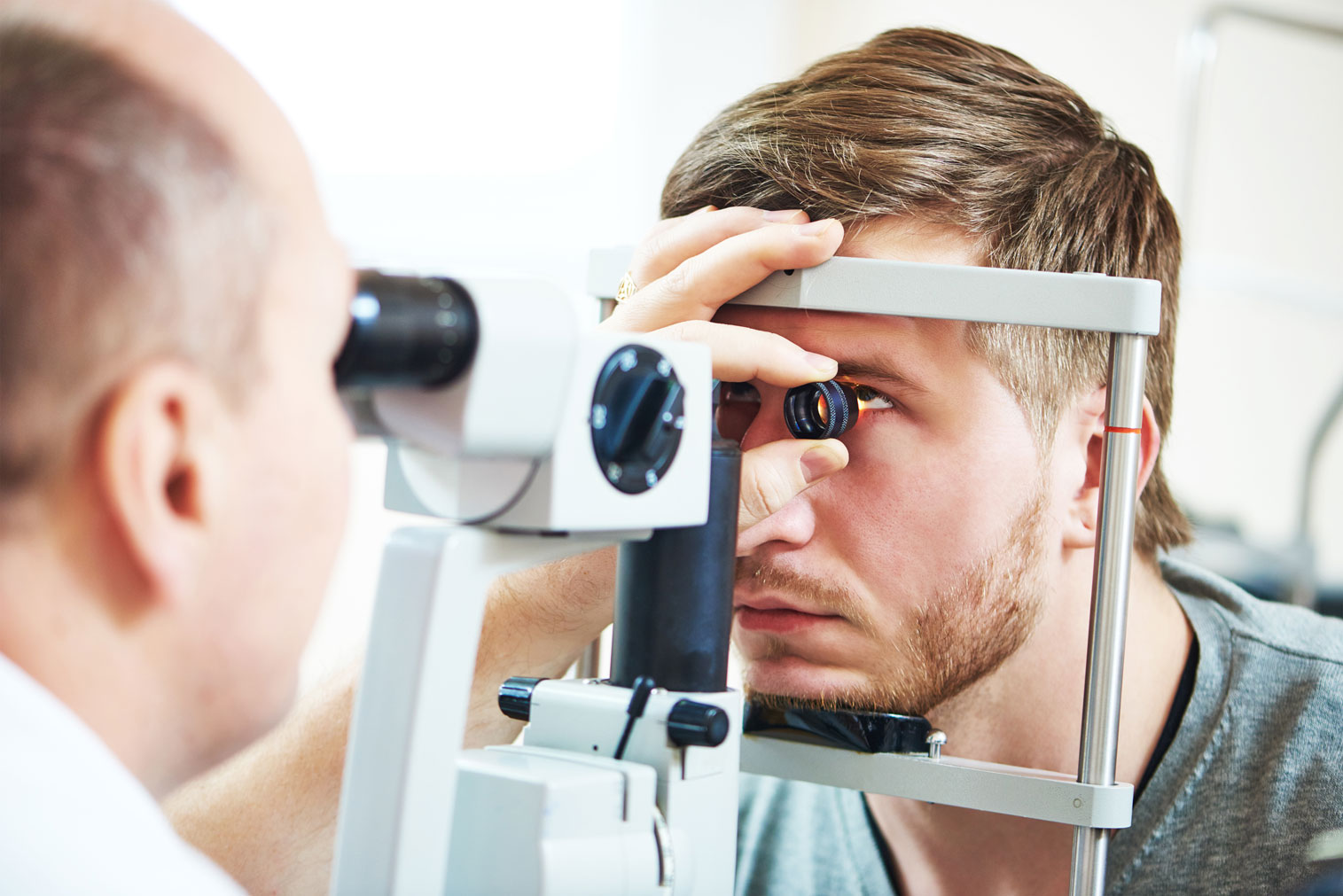
Diabetic Eye Disease
Diabetic Eye Disease
One of the more common eye disorders related to diabetes is diabetic retinopathy. The term actually covers a range of retinal disorders that can be caused by diabetes. Diabetic retinopathy is generally classified into two types: non-proliferative and proliferative.
Non-proliferative retinopathy is the most common form of diabetic retinopathy. Non-proliferative retinopathy refers to a condition in which capillaries in the back of the eye swell to form pockets or pouches. As a result, the capillary walls are less able to control the flow of blood and other fluids to the retina. Fluid can actually leak into the macula (the part of the retina that is responsible for our central vision) and cause macular edema, a condition in which the macula swells. Macular edema has the potential to cause significant vision loss. Fortunately, macular edema can be treated so that vision loss is halted and, in some cases, restored.
When diabetic retinopathy is left untreated and is allowed to progress to more serious stages, proliferative retinopathy may result. In this type of diabetic retinopathy, blood vessels in the eye become so damaged that they completely cut off the flow of blood. This stimulates new blood vessels and scar tissue to develop. There is often leaking of blood, also called vitreous hemorrhaging. Enlarging and shrinking scar tissue can also cause the retina to become dislocated or detached. Both conditions can cause severely impaired vision, including blindness.
Symptoms
For many diabetics, there are no symptoms of diabetic retinopathy in its earliest stages. However, our eye specialists can detect early retinopathy during a comprehensive exam, even if no symptoms are present. We recommend that you get screened regularly as a preventive measure.
As retinopathy progresses, vision may become blurred as the macula swells due to fluid leakage or the growth of new blood vessels on the retina. If bleeding occurs, the field of vision becomes hazy or distorted, a possible sign of an advanced form of retinopathy. The sooner diabetic retinopathy is diagnosed, the better the chances are for saving the patient’s vision with effective treatments.
Treatments
Non-proliferative retinopathy does not require treatment. By controlling the levels of blood pressure, blood sugar, and cholesterol, the progression of non-proliferative retinopathy can be halted. However, if macular edema has begun, or if diabetic retinopathy has advanced to the proliferative stage, surgical treatment (laser, injection, or operation) is usually required. Most surgical procedures for diabetic retinopathy are highly effective at restoring vision, but none of them provide a cure. Patients require close follow-up treatment to protect their vision.
Focal Laser Surgery
If macula edema has occurred, focal laser surgery is typically the recommended course of treatment. During focal laser surgery, an ophthalmologist treats the retinal areas where there is leakage, thereby reducing the amount of fluid in the retina. Focal laser surgery reduces vision loss by up to 50 percent, stabilizes vision, and can usually be successfully completed in one session if only one eye is being treated. For treatment of both eyes, focal laser surgery is done over two sessions, several weeks apart.
Scatter Laser Surgery (Panretinal Photocoagulation (PRP)
If diabetic retinopathy has progressed to the proliferative stage, then scatter laser surgery is usually the recommended course of treatment, unless there has been bleeding. By treating the retina, away from the macula, an ophthalmologist can shrink abnormal blood vessels to preserve central vision. There are some potential drawbacks to this procedure, however, including slightly decreased side vision, night vision, and color vision. Most scatter laser surgery can be completed in one or two sessions.
Vitrectomy
When the growth of abnormal blood vessels in the retina has caused bleeding (vitreous hemorrhaging), a vitrectomy is usually required. This procedure removes blood clouding the vitreous gel at the center of the eye. During a vitrectomy, performed while the patient is under either general or local anesthesia, the ophthalmologist makes a very small incision in the eye, uses a tiny instrument to remove the vitreous gel, and replaces the gel with saline solution to restore clear vision. Typically done as an outpatient procedure, a vitrectomy requires the use of an eye patch and medicated eyedrops for several days following surgery.
Who Is at Risk?
People with type I and II diabetes are at risk for developing some form of diabetic retinopathy and should have their eyes examined regularly. Those with high blood sugar, high cholesterol, and high blood pressure levels may also be at risk. Pregnancy may also be a risk factor.
What You Can Do
Studies suggest that people who maintain consistently normal blood sugar levels are less likely to develop diabetic retinopathy. You should therefore closely monitor your blood glucose level by checking it daily and recording results in addition to following the diet your doctor has developed for you.
Try to be physically active at least 30 minutes per day to help keep your blood pressure normal. If you are a smoker, work with your doctor to develop a plan to help you quit. Most importantly, see an ophthalmologist at least once a year for a comprehensive eye exam. Make sure your ophthalmologist knows you need to be screened for cataracts, glaucoma, and diabetic retinopathy.
Schedule An Appointment
Make an appointment with our ophthalmologist specialist today.
Ophthalmology Signs & Symptoms
The most common signs and symptoms, and risk factors of eye disease seen in our ophthalmology patients from Pinehurst, Southern Pines, Fayetteville, and beyond.
What Is An Ophthalmologist?
Ophthalmologists are specially trained to provide a full spectrum of eye care, from prescribing glasses to complex and delicate eye surgery.
Our Ophthalmologist Provider
Leading Ophthalmologist in Pinehurst, Southern Pines, Fayetteville, NC & Beyond.




